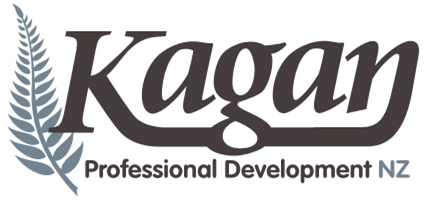
KAGAN STRUCTURES FOR ESOL
Kagan Structures to Skyrocket Comprehension and Fluency!
2 Day workshop
What are the most effective ways to meet the educational requirements of English Language Learners (ELLs) or English for Speakers of Other Languages (ESOL) students in contemporary classrooms?
How can we facilitate the acquisition of crucial reading, writing, and speaking skills required for academic success across diverse subjects among students with limited or no English proficiency?
Kagan Structures, utilizing cooperative and communicative teaching methodologies, are invaluable resources for enhancing English fluency while conveying academic knowledge. By incorporating interactive structures, students are exposed to more functional language and have the opportunity to practice language more effectively.
To effectively support ELLs/ESOL students, educators must familiarise themselves with the stages of English language acquisition and utilise Kagan Structures tailored to the needs of students at each stage. These structures are ideal for regular classroom teachers, ESL teachers, project directors, and coordinators seeking to empower English learners in their classrooms.
Additionally, it is essential to create an inclusive learning environment that recognises and values the diverse linguistic and cultural backgrounds of ELLs/ESOL students. Educators should incorporate culturally relevant materials, such as literature and multimedia, that reflect the students' heritage, history, and experiences, thereby promoting cultural pride and identity.
Furthermore, building relationships with ELLs/ESOL students and their families through regular communication and outreach efforts can establish a supportive and collaborative partnership that enhances student learning outcomes.
Ultimately, a comprehensive approach that incorporates effective teaching strategies and culturally responsive practices is essential for meeting the academic and socio-emotional needs of today's diverse ELLs/ESOL population.
Workshop Highlights
Incorporate culturally responsive practices to facilitate English language acquisition and promote cultural pride and identity among ELLs/ESOL students.
Utilise Kagan Structures to integrate language learning with academic success, based on the stages of English language acquisition, and provide fun, motivating activities that engage students at every stage.
Bridge the achievement gap for second language learners by implementing cutting-edge strategies that combine language and content knowledge.
Establish a safe and supportive learning environment that encourages the development of language skills through rich team and pair interactions.
Teach language skills in context, utilising a range of effective techniques to ensure that ELLs/ESOL students can practice language skills in meaningful ways.
Manage your classroom effectively to optimize success for ELLs/ESOL students, providing targeted support services and resources as necessary.
Stay up-to-date with the latest research in language acquisition and related fields to continue improving teaching practices and student outcomes.
Incorporate technology and digital resources to enhance language learning opportunities and provide students with additional support and practice materials.
With your attendance, you will receive:
Kagan Structures for ESOL Learners Workbook
Discount option to purchase bonus materials:
Classbuilding SmartCard
Communication Boosters SmartCard
Paraphrase Chips
Same-Different Fairy Tales Book
Same-Different Holidays Book
Smart Card: Second Language Learning
Talking Teamwork Poster Set (6 posters)
Teambuilding Chips
Teambuilding SmartCard


